
Discover the benefits of a gluten and dairy-free lifestyle with our comprehensive guide․ Learn how to identify safe foods, avoid hidden allergens, and download a handy PDF food list for easy reference․
Why Choose Gluten and Dairy-Free Foods?
Adopting a gluten and dairy-free diet can significantly improve health for those with celiac disease, lactose intolerance, or sensitivities․ It helps manage symptoms like bloating, fatigue, and skin issues․ Many find increased energy and better digestion․ These diets also promote whole, nutrient-rich foods, reducing reliance on processed items․ They are ideal for individuals seeking to avoid common allergens and inflammation triggers․ By focusing on fresh produce, lean proteins, and whole grains, this lifestyle supports long-term wellness and can be tailored to suit various dietary needs and preferences․ It’s a proactive choice for better health and vitality․
Benefits of a Gluten and Dairy-Free Lifestyle
Embracing a gluten and dairy-free lifestyle offers numerous health benefits, including improved digestion, reduced inflammation, and enhanced energy levels․ Many individuals experience fewer digestive issues like bloating and discomfort․ This diet can also support weight management and promote clearer skin․ Additionally, it helps avoid common allergens that may contribute to chronic conditions․ By focusing on whole, nutrient-rich foods, individuals often feel more balanced and vibrant․ This lifestyle is particularly beneficial for those with celiac disease, lactose intolerance, or sensitivities, fostering long-term well-being and vitality․ It’s a proactive approach to healthier living and disease prevention․

Essential Gluten-Free and Dairy-Free Foods
Stock your pantry with fresh produce, lean proteins, and gluten-free grains․ Include dairy-free alternatives like almond milk and coconut yogurt for a balanced diet․
Produce: Fresh Fruits and Vegetables
Fresh fruits and vegetables are naturally gluten-free and dairy-free, making them a cornerstone of this diet․ Incorporate a variety of colorful options like leafy greens, berries, citrus fruits, and cruciferous vegetables․ Asparagus, avocados, bananas, carrots, celery, and eggplant are excellent choices․ These foods provide essential vitamins, minerals, and antioxidants, supporting overall health․ Opt for seasonal produce to ensure freshness and flavor․ Always rinse thoroughly before consumption to maintain quality and safety․ Fresh produce is a versatile base for salads, snacks, and meals, ensuring a balanced and nutritious gluten-free and dairy-free lifestyle․
Meat, Poultry, and Seafood Options
Meat, poultry, and seafood are naturally gluten-free and dairy-free, making them excellent protein sources for this diet․ Choose grass-fed beef, free-range chicken, and wild-caught fish for optimal health․ Avoid processed meats like hot dogs and deli meats, as they may contain gluten․ Always check labels for added fillers or sauces․ Opt for fresh cuts of meat and seafood to ensure purity․ Marinate or season with gluten-free options for added flavor․ These proteins are versatile for grilling, roasting, or stir-frying, providing essential nutrients for a balanced gluten-free and dairy-free lifestyle․ Prioritize quality and freshness for the best results․
Gluten-Free Whole Grains
Gluten-free whole grains are a cornerstone of a balanced diet, offering essential nutrients and fiber․ Options include brown rice, quinoa, buckwheat, amaranth, and gluten-free oats․ These grains are naturally free from gluten and rich in vitamins, minerals, and antioxidants․ They support healthy digestion and provide sustained energy․ Incorporate them into meals like salads, stir-fries, or as side dishes․ Always ensure oats are labeled as gluten-free to avoid cross-contamination․ These versatile grains add variety and nutrition to gluten-free and dairy-free diets, making them a must-have in your pantry for delicious and wholesome meals․
Dairy-Free Alternatives and Substitutes
Dairy-free alternatives offer versatile options for those avoiding dairy․ Plant-based milks like almond, coconut, oat, and soy are excellent substitutes for traditional milk․ Nutritional yeast mimics the cheesy flavor, while vegan butter and coconut oil replace dairy fats․ For baking, flax eggs or applesauce can serve as binders․ Always check labels to ensure these products are gluten-free and free from hidden dairy derivatives․ These substitutes enable delicious, dairy-free versions of recipes, from smoothies to baked goods, making it easy to maintain a gluten-free and dairy-free lifestyle without compromising on taste or nutrition․
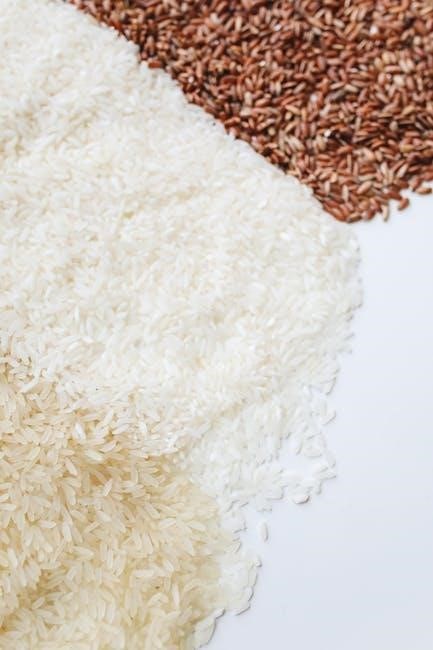
Stocking Your Gluten-Free and Dairy-Free Pantry
Build a well-stocked pantry with gluten-free grains, dairy-free alternatives, and essential condiments․ Ensure all items are labeled gluten-free to maintain a safe and allergen-friendly kitchen environment․
Pantry Staples for Everyday Meals
Stock your pantry with essential gluten-free and dairy-free staples for easy meal preparation․ Include items like brown rice, quinoa, and gluten-free oats for versatile bases․ Add non-perishables such as canned beans, tomatoes, and coconut milk for hearty soups and stews․ Incorporate nut butters, seeds, and healthy oils like olive and coconut oil for added nutrition and flavor․ Don’t forget baking essentials like almond flour, coconut sugar, and baking soda for gluten-free treats․ These pantry staples will form the foundation of your gluten-free and dairy-free cooking, ensuring delicious and stress-free meals every day․
Oils, Condiments, and Sauces
Enhance your gluten-free and dairy-free meals with the right oils, condiments, and sauces․ Choose from olive oil, coconut oil, avocado oil, and sesame oil for versatile cooking․ Opt for gluten-free condiments like ketchup, mustard, and mayonnaise, ensuring they are free from dairy․ Incorporate hot sauce, salsa, and guacamole for added flavor․ Nutritional yeast is a great dairy-free alternative for cheesy flavors․ For sauces, use tamari or gluten-free soy sauce, and explore homemade marinades and dressings․ Always verify labels to avoid hidden gluten or dairy․ These additions will elevate your meals while maintaining dietary compliance․
Snacks and Convenience Foods
Snacks and convenience foods can be easily incorporated into a gluten-free and dairy-free diet․ Opt for nuts, seeds, and fresh veggie sticks for quick, healthy options․ Gluten-free crackers, such as those made from rice or corn, pair perfectly with hummus or guacamole․ Portable snacks like energy balls, fruit leather, and dried fruit are ideal for on-the-go․ Look for certified gluten-free and dairy-free labels on packaged snacks․ Brands like Mary’s Gone Crackers and Beanitos offer safe choices․ Always check labels to avoid hidden allergens and ensure compliance with your dietary needs․ These snacks make transitioning to a gluten-free and dairy-free lifestyle convenient and enjoyable․
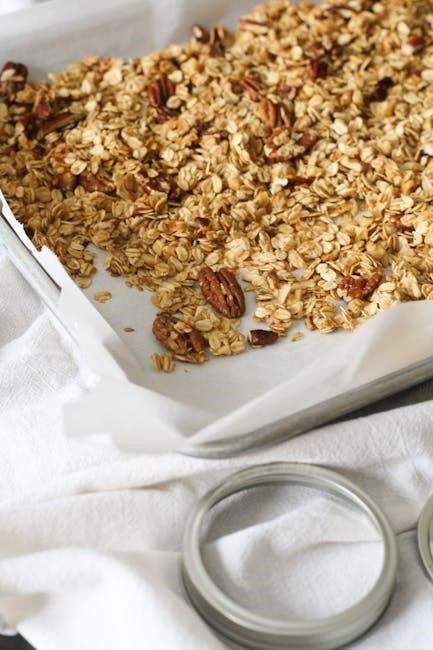
Gluten-Free and Dairy-Free Baking Tips
Use alternative flours like almond, coconut, or rice flour for gluten-free baking․ Replace dairy with nut milk or vegan butter․ Binding agents like xanthan gum enhance texture․
Flour Substitutes for Baking
When baking gluten-free, various flours can replace traditional wheat flour․ Almond flour offers a nutty flavor and moist texture, while coconut flour absorbs liquid well, requiring more eggs․ Rice flour is light but lacks elasticity․ Quinoa flour provides protein and a slightly nutty taste․ Tapioca flour and arrowroot powder act as excellent thickening agents․ Blending these flours creates balanced textures․ Always ensure they are certified gluten-free for safety․ Download our PDF guide for a detailed list of substitutes and ratios to achieve perfect baked goods every time․
Dairy-Free Baking Essentials
For dairy-free baking, substitutes like almond milk, coconut milk, or oat milk replace traditional milk․ Vegan butter or coconut oil substitutes for butter, while flax eggs or apple cider vinegar can replace eggs․ Nutritional yeast mimics cheese flavors, and lemon juice enhances moisture․ Use vanilla extract for flavor and apple cider vinegar to react with baking soda․ These ingredients ensure baked goods are both dairy-free and delicious․ Always check labels for cross-contamination and opt for certified dairy-free products․ Refer to our PDF guide for a complete list of dairy-free baking essentials and substitutions to simplify your gluten-free journey․
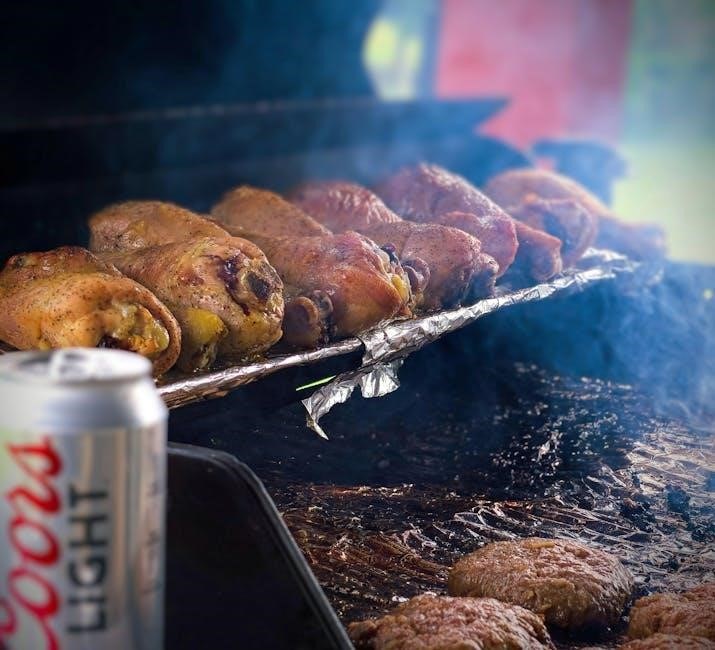
Dining Out Gluten and Dairy-Free
Inform your server about dietary needs to ensure safe meal preparation․ Choose naturally gluten- and dairy-free options like grilled meats or salads, and verify sauce ingredients carefully․
Restaurant Tips and Best Practices
Call ahead to confirm gluten- and dairy-free options․ Inform your server of dietary needs to ensure proper meal preparation․ Choose naturally gluten- and dairy-free dishes like grilled meats, fish, or salads․ Avoid processed sauces and dressings, as they may contain hidden allergens․ Opt for restaurants with separate gluten-free menus to minimize cross-contamination․ Use your printable gluten- and dairy-free food list PDF as a guide for safe choices․ Always double-check ingredients and ask questions to ensure your meal aligns with your dietary requirements․ This proactive approach helps create a safe and enjoyable dining experience․
Questions to Ask Your Server
When dining out, ask your server about gluten- and dairy-free options․ Inquire if the chef can prepare meals without cross-contamination․ Check if sauces, dressings, or seasonings contain gluten or dairy․ Confirm if fried items are cooked in shared fryers․ Request clarification on ingredients in dishes like soups or salads․ Ask if they have a separate gluten-free menu or if modifications can be made․ Ensure they understand your dietary needs to avoid accidental exposure; Using your gluten- and dairy-free food list PDF as a guide can help identify safe choices․ Clear communication ensures a safe and enjoyable dining experience․

Breakfast Ideas for Gluten and Dairy-Free Diets
Start your day with gluten- and dairy-free options like smoothies, chia pudding, or overnight oats․ Try scrambled eggs with spinach, avocado toast on gluten-free bread, or fresh fruit salad․ Use your food list PDF to plan delicious and safe breakfast meals․
Gluten-Free and Dairy-Free Breakfast Recipes
Enjoy delicious mornings with these easy recipes! Try chia pudding with almond milk and fresh berries, or avocado toast on gluten-free bread․ Whip up a smoothie with spinach, banana, and dairy-free yogurt․ Quinoa breakfast bowls with roasted veggies and eggs are a hearty option․ For a quick start, make muffins with gluten-free flours, eggs, and veggies․ Use your food list PDF to ensure all ingredients are safe․ These recipes are perfect for a healthy, allergen-free breakfast that fuels your day․ Experiment with flavors and ingredients to keep your mornings exciting and nutritious!
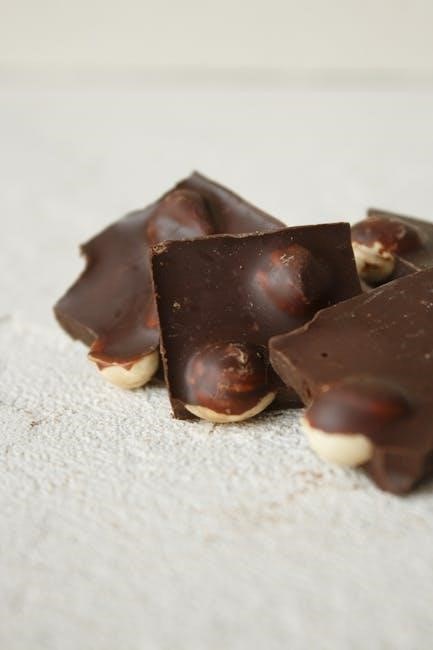
Printable Gluten and Dairy-Free Food List PDF
Download a comprehensive PDF guide featuring a detailed food list to simplify your gluten and dairy-free journey․ This handy resource helps identify safe foods and avoid hidden allergens, making shopping and meal planning effortless․
How to Use the PDF Guide
Start by reviewing the comprehensive food list in the PDF guide, which categorizes items into produce, proteins, grains, and more․ Use the search function to quickly locate specific foods․ Check labels for hidden gluten and dairy sources․ Plan meals using the recipe suggestions and shopping tips provided․ Print the guide for easy reference while shopping or cooking․ Customize the list to suit your dietary needs and preferences․ This resource is designed to make your gluten and dairy-free lifestyle simple and sustainable, ensuring you always know what to eat and avoid․
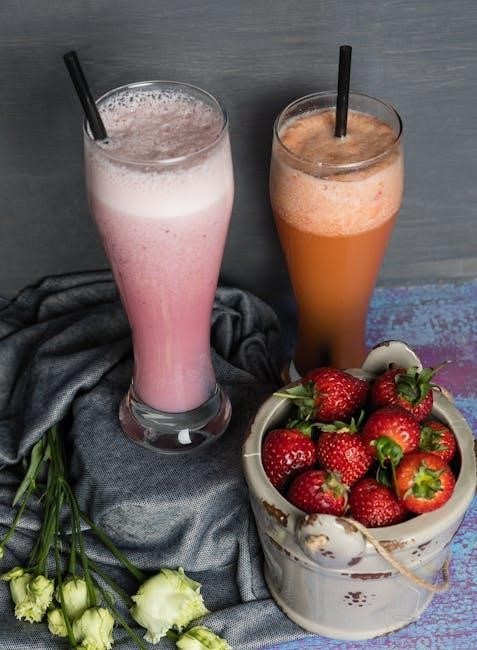
Customizing Your Food List
Tailor your gluten and dairy-free food list to suit your preferences and dietary needs․ Add personal favorites and note preferences like low FODMAP or vegan options․ Highlight items you frequently purchase and organize the list by categories, such as produce, proteins, and grains․ Use the PDF guide as a base and modify it to reflect your lifestyle․ Check labels for hidden allergens and add notes for quick reference․ This personalized approach ensures your diet remains balanced and enjoyable while making grocery shopping efficient and stress-free․
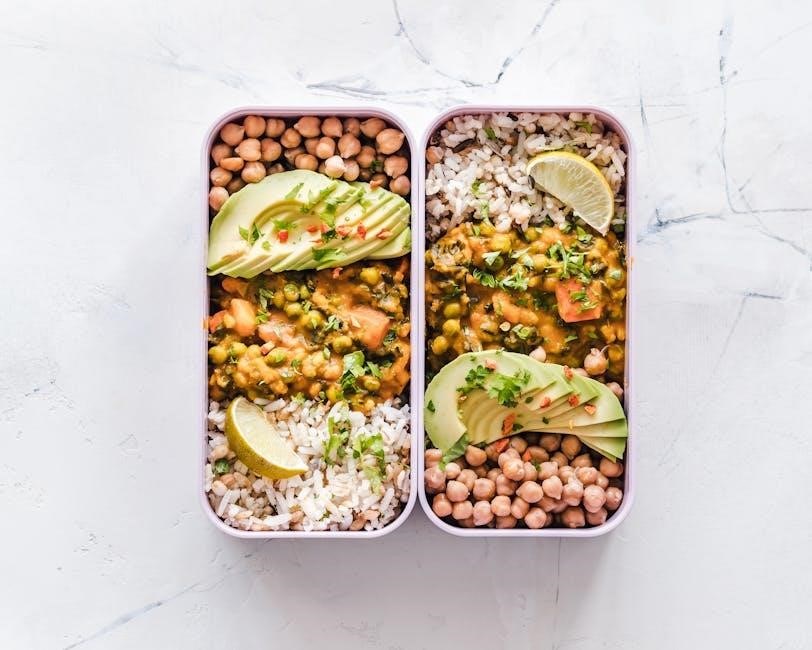
Avoiding Hidden Gluten and Dairy Sources
Identify stealthy gluten and dairy in everyday products like sauces, processed meats, and packaged snacks․ Always read labels to ensure ingredients align with your dietary needs․
Common Hidden Sources of Gluten
Gluten often hides in unexpected foods like soy sauce, processed meats, and sauces․ Some seasonings, deli meats, and even bacon may contain gluten․ Always check labels carefully to avoid unintended exposure․ Processed snacks, candies, and flavored chips can also harbor gluten, making label reading essential․ Even seemingly gluten-free foods like oats can be contaminated during processing․ Being vigilant ensures a safe and healthy gluten-free diet․ Use our PDF guide to identify these hidden sources and make informed choices for your meals and snacks․
Hidden Dairy Ingredients to Watch For
Dairy can disguise itself in many foods under names like casein, whey, and lactose․ Even non-dairy products may contain these hidden ingredients․ Always read labels to avoid unintended dairy exposure․ Processed snacks, energy bars, and even some vitamins can include dairy derivatives․ Our PDF guide helps you identify these sneaky additives, ensuring your diet remains dairy-free․ Stay informed and make safe choices with our comprehensive list of hidden dairy ingredients to avoid․

FODMAP-Friendly Gluten and Dairy-Free Foods
Opt for low FODMAP options like green beans, carrots, and berries․ Avoid high FODMAP foods such as garlic and onions․ Download our PDF guide for a detailed list of FODMAP-friendly gluten and dairy-free foods to manage digestive health effectively․
Low FODMAP Foods for Sensitive Diets
For those with sensitive digestion, incorporating low FODMAP foods into a gluten and dairy-free diet can significantly reduce discomfort․ Choose vegetables like green beans, carrots, and bell peppers, which are naturally low in FODMAPs․ Opt for lean proteins such as chicken, turkey, or fish, and select gluten-free grains like rice or quinoa․ Fresh fruits such as bananas, berries, and citrus are also excellent options․ Avoid high FODMAP foods like garlic, onions, and legumes․ Refer to our PDF guide for a detailed list of low FODMAP, gluten-free, and dairy-free foods to simplify your meal planning and improve digestive health․
Embrace a healthier lifestyle with our comprehensive guide to gluten and dairy-free living․ Download the PDF food list for easy meal planning and enjoy improved digestion and energy․
Final Thoughts on Gluten and Dairy-Free Living
Transitioning to a gluten and dairy-free lifestyle can be transformative for overall health․ By focusing on whole, unprocessed foods and utilizing the PDF food list, individuals can easily navigate their dietary needs․ This approach not only aids in managing sensitivities but also promotes a balanced and nutritious diet․ The key is to stay informed about hidden allergens and explore creative alternatives for everyday meals․ With the right resources and mindset, embracing a gluten and dairy-free lifestyle becomes both sustainable and enjoyable, leading to improved well-being and vitality․
Call to Action: Download Your PDF Guide
Ready to simplify your gluten and dairy-free journey? Download our exclusive PDF guide today! This comprehensive resource includes a detailed food list, shopping tips, and meal ideas to help you thrive․ Whether you’re planning meals or stocking your pantry, this guide offers clarity and convenience․ Print it out for easy reference or keep it handy on your device․ Start your path to a healthier, hassle-free lifestyle with this essential tool․ Click here to access your free guide and take the first step toward a gluten and dairy-free life!





